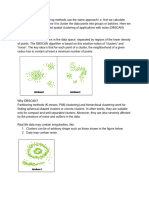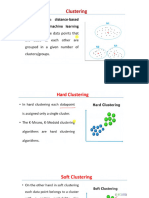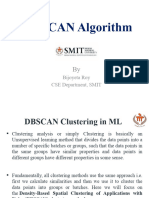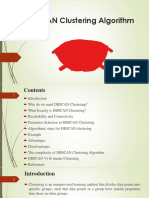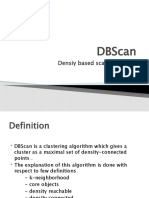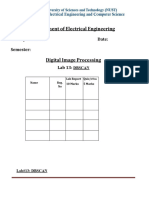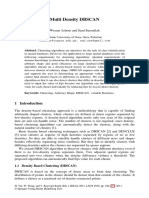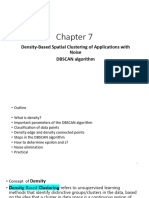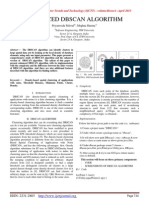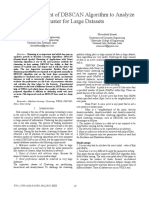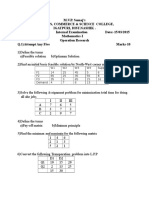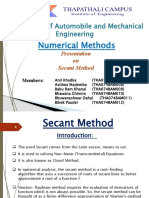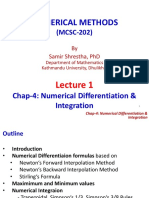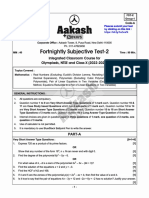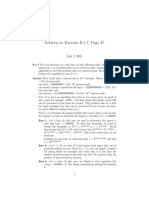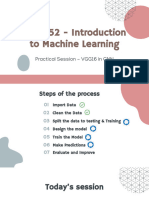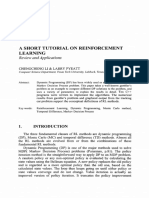0% found this document useful (0 votes)
34 views29 pagesDBSCAN
DBSCAN (Density-Based Spatial Clustering of Applications with Noise) is an unsupervised clustering algorithm that identifies clusters of varying shapes and densities, effectively handling noise and outliers. It requires two parameters: epsilon (ε), the maximum distance for points to be considered neighbors, and MinPts, the minimum number of points to form a dense region. The algorithm iteratively identifies core points and expands clusters based on density connectivity, distinguishing between cluster points and noise.
Uploaded by
ksheoran1213Copyright
© © All Rights Reserved
We take content rights seriously. If you suspect this is your content, claim it here.
Available Formats
Download as PPTX, PDF, TXT or read online on Scribd
0% found this document useful (0 votes)
34 views29 pagesDBSCAN
DBSCAN (Density-Based Spatial Clustering of Applications with Noise) is an unsupervised clustering algorithm that identifies clusters of varying shapes and densities, effectively handling noise and outliers. It requires two parameters: epsilon (ε), the maximum distance for points to be considered neighbors, and MinPts, the minimum number of points to form a dense region. The algorithm iteratively identifies core points and expands clusters based on density connectivity, distinguishing between cluster points and noise.
Uploaded by
ksheoran1213Copyright
© © All Rights Reserved
We take content rights seriously. If you suspect this is your content, claim it here.
Available Formats
Download as PPTX, PDF, TXT or read online on Scribd
/ 29


